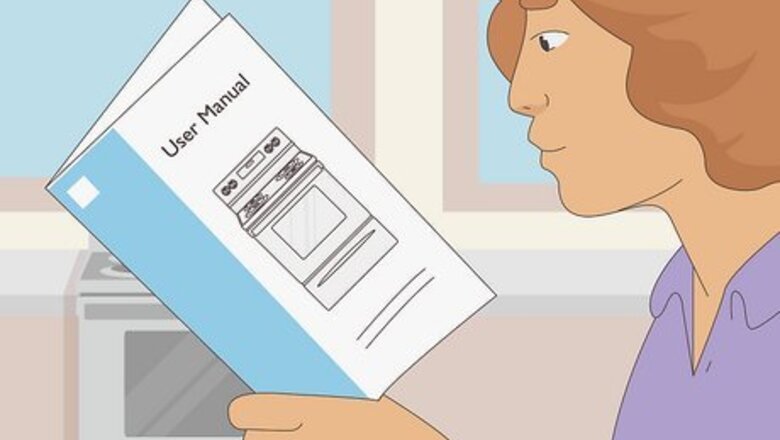
views
- Read your oven’s operational manual to familiarize yourself with things like temperature controls, racks, and lighting fixtures.
- Preheat your oven for about 20 minutes, waiting until the target cooking temperature is reached, before you insert your food.
- Cook your food thoroughly, until its internal temperature reaches about 165 °F (74 °C) and it has the desired appearance.
- Use your oven’s self-cleaning function, or wash it with powdered dishwasher detergent, baking soda, and vinegar.
Using a Gas Oven
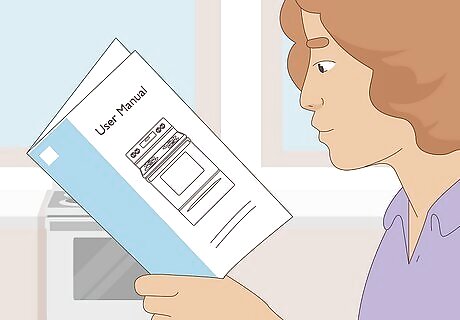
Learn the basics of your oven. Before you start attempting to use your gas oven, or any oven, read over any instruction manuals you have, or look up your oven’s online manual by searching the model and brand. This will inform you of the basics of how to turn the oven on and off as well how to move the racks and other aspects of how your oven works. Every oven comes with racks. Before using your oven, experiment with taking them in and out of the oven. Depending on what you're cooking, you may have to adjust the oven racks. It's a good idea to get a sense of how to do so. Determine how to turn the oven on and set the temperature. Usually, you have to turn a knob near the front to the appropriate heat setting. Some ovens give off a signal, such as light going on and off or a noise being made, indicating when the oven is adequately heated.
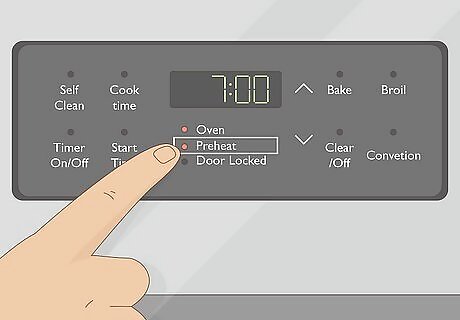
Preheat your gas oven. Turn the temperature knob or use the digital display to preheat your oven to the desired temperature, then wait about 7-10 minutes for your oven to preheat. Wait until your oven has reached the desired temperature before you place your food inside. Use an oven thermometer for gas ovens, since these ovens preheat quickly and tend to fluctuate in temperature, and you may need to adjust the oven’s temperature accordingly. You may need to turn the heat slightly up or slightly down during the cooking process.

Place your food in the oven and monitor it. Using a pair of oven mitts, place your food in the oven. Then, set a timer for the recipe’s indicated cooking time. Let the food sit in the oven for the indicated time, or until it reaches a food-safe temperature and has the desired appearance. Most foods should be cooked to a minimum of 165 °F (74 °C), but consult a guide like FoodSafety.gov to find the proper temperature for your particular dish. Use a food thermometer to monitor your food’s internal temperature as it cooks. Avoid using dark metal cookware in a gas oven. In a gas oven, heat comes from the bottom of the oven. Dark metal cookware will absorb heat faster, which can burn the bottom of dark cookware Opt for light-colored metal, glass, or silicone instead. Opening the oven too often during the cooking process can cause the temperature to drop suddenly.
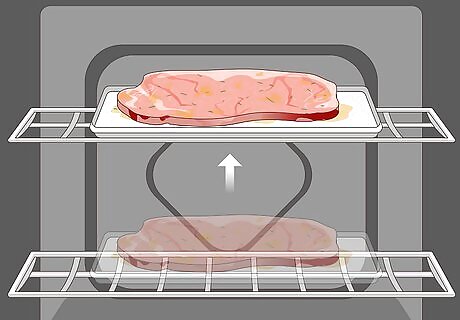
Make adjustments while your food cooks. Gas ovens tend to be a bit more humid than other types, and it can be more difficult to achieve crispy, brown dishes. To solve this, use oven mitts to move food to a higher rack in order to get a browner color faster. You can also turn up the heat by about 25 °F (−4 °C) to get a crispier dish. Rotate your dish by 90 degrees occasionally to cook food evenly as temperatures inside your oven fluctuate. If you're using more than one rack to bake something like cookies, switch the top and bottom trays about halfway through cooking to ensure even baking. In addition, place a pizza stone on the rack beneath your food to help regulate the temperature. While typically used for pizza, these stones store and distribute heat in a way that can help your food cook more evenly
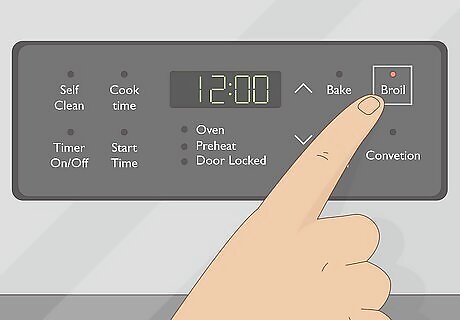
Turn on the broiler to brown some foods. The broiler is a heating element in your oven that aims intense heat at the top of your food in order to brown or char it. Most often, you can turn it on by pressing a button on your oven’s interface.Place the dish on the center rack of the oven when broiling, and monitor it closely. Turn off the broiler once the dish is browned; avoid burning it! Many ovens have the broiler inside the oven itself. Some position the broiler in a heating drawer beneath the main chamber. Consult your oven’s manual to identify where the broiler is. Use the broiler on dishes like chicken breasts, fish filets, skirt steaks, or pork chops, for a nice brown color.
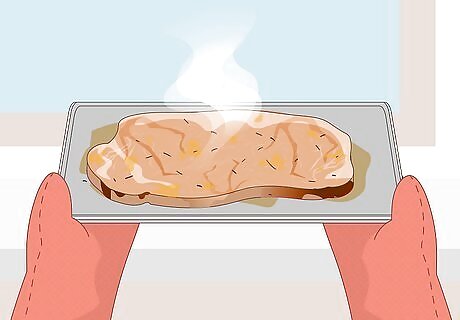
Take the dish out of the oven or keep it warm. Using oven mitts, remove your food from the oven and set it on a heat-resistant surface like a stovetop until it cools a bit. But you might want to keep it warm while you prepare other foods. To do this, set the oven’s temperature to 200–250 °F (93–121 °C) to keep food heated without overcooking it. Use a food thermometer to ensure the food itself stays above 140 °F (60 °C) to keep it safe to eat.
Using an Electric Oven
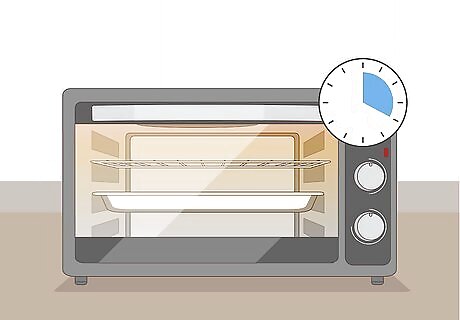
Preheat your electric oven. Electric ovens usually allow you to punch in the temperature electronically and will then give an indication when the oven is ready. A light on your oven may go on or off or it may make a noise to indicate it's heated. Start preheating your electric oven before you begin preparing recipes—Gas ovens tend to heat quickly, but electric ovens need more time to reach the proper temperature (about 20 minutes). You should use an oven thermometer to make sure your electric oven is at the right temperature. An electric convection oven (one that moves hot air around with a fan for more even cooking) may preheat slightly faster than one that isn’t convection-capable, but wait about 20 minutes or until you hear the noise that indicates preheating is finished, anyway.

Place your food in the oven. Bake items in the middle oven rack. Unless a recipe specifies an item should be placed on the upper or lower oven rack, always use the middle rack with an electric oven (or place food as close to center-height as possible). This is the spot where the heat will be least likely to fluctuate during the cooking process. This will make your food cook more evenly throughout. The broiler in electric ovens is most often located inside the oven itself, rather than the drawer beneath, like in some gas ovens. Use the broiler to brown your food to your taste. Use the right bakeware for what you're cooking. If you want browning around the sides and bottoms of your foods, go for metal bakeware. If you want to decrease browning, go for glass or silicone products.
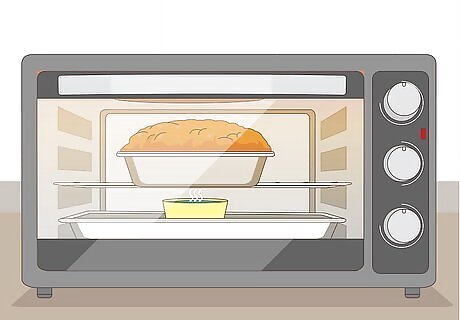
Add steam when necessary. Electric ovens tend to be fairly dry. Oftentimes, this can delay bread and other similar foods from rising. If you're struggling to make something like a pizza crust or loaf of bread rise, try adding a little steam to your electronic oven. You can pour a cup of hot water into a pan and then set it at the bottom of the oven. You can also open the oven a crack and use a spray bottle to spritz some water into the oven.

Remove the food from the oven or keep it warm. Use oven mitts to remove your food from the oven, and set it on a heat-resistant surface until it’s time to eat. Or, you might want to keep it warm while you prepare other foods. Lower the oven’s temperature to 200–250 °F (93–121 °C) to keep food at a steady temperature without overcooking it. Use a food thermometer to ensure the food itself stays above 140 °F (60 °C) to keep it safe for consumption.
Cleaning Your Oven
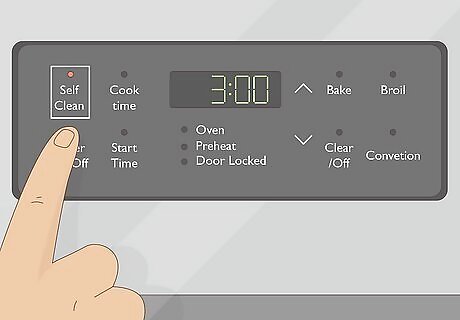
Take advantage of the self cleaning option. If your oven has a self cleaning option, that's usually the best way to get the job done. Your oven's instruction manual should indicate how to use the self cleaning option. Usually, the oven will lock and self clean for about two hours. After the oven finishes self cleaning, you simply wipe off any debris with a paper towel. During this time, the oven will heat up to over 500 °F (260 °C). This will burn off any drippings, turning them into an ash that you can wipe away easily.
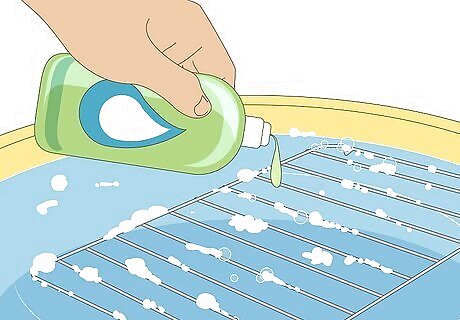
Remove and clean your oven racks. If your oven does not have a self cleaning option, you will need to clean it manually. To start, remove and clean the oven racks. Lay a towel down on the bottom of your bathtub and fill the tub with hot water. Add half a cup of powder dishwasher detergent and swish it around into the water.. Let the racks soak for about four hours. Then, wipe off any gunk and stains with a non-abrasive scrub brush. Rinse the racks completely and then allow them to air dry.
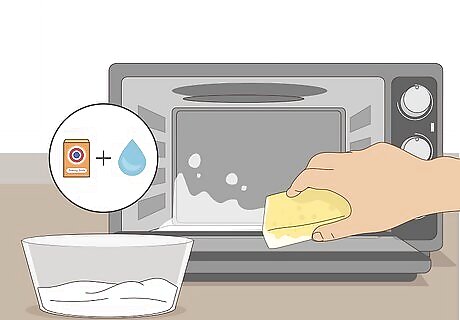
Coat your oven in baking soda and water. Mix baking soda and water until you form a workable paste. Then, use a cloth or sponge to coat the inside of your oven with your paste. Make sure to get the sides, bottom, and top of your oven.
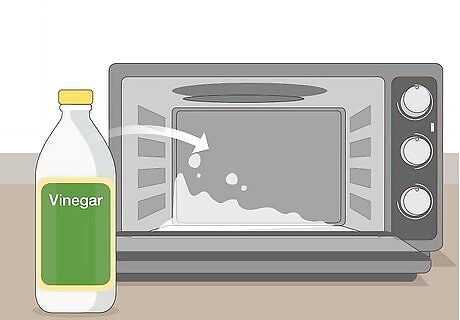
Add vinegar and scrub off the baking soda. Pour vinegar over the baking soda and water mixture. Allow the vinegar to sit on until it begins to fizzle lightly. This should happen fairly quickly. This helps loosen dirt and debris, allowing you to easily clean your oven. Once the vinegar is fizzling, use a sponge to scrub down the top, bottom, and sides of an oven. Scrub until you remove all loose dirt and debris. When you're done, use a paper towel to remove any lingering baking soda, water, and loose dirt and bits of food.
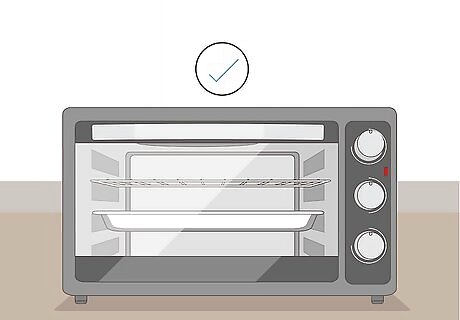
Place the oven racks back in the oven. After you've cleaned out the interior of the oven, place your oven racks back in place. Your oven should now be clean and ready to use. To keep your oven clean, try putting an oven liner or basting pan in the bottom to catch any drips.



















Comments
0 comment